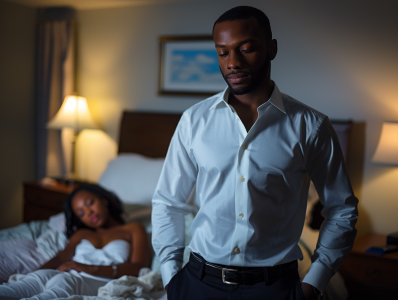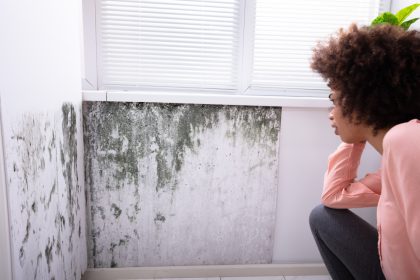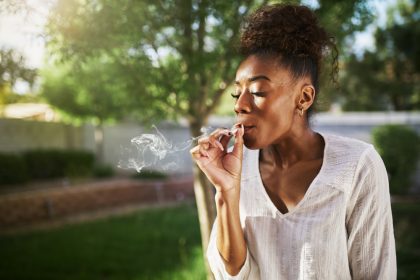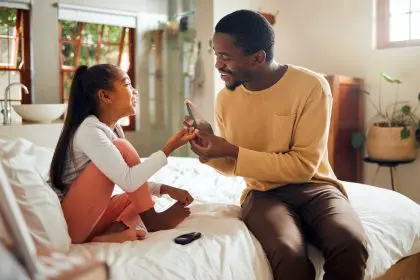Rasheed Bility, Ed.D., is an educator with more than 11 years of experience, including six years of leadership and coaching, five years of teaching, and two years as support staff in higher education. He is deeply passionate about empowering students of color, advocating on behalf of students with disabilities, instructional leadership in mathematics, history and special education, and school culture and climate.
Bility is committed to inspiring all students and educational stakeholders to become introspective critical thinkers, lifelong learners, and responsible citizens in a global community. His expertise lies in restorative approaches to discipline, special education law, overseeing curriculum development, community partnership building, and standard setting for both students and staff. He is experienced in establishing academic standards, overseeing implementation of those standards, and ensuring teachers have the resources and support needed to meet those benchmarks.
As a person of excellence, Bility was someone rolling out publisher and CEO Munson Steed sought out for an interview. Here is their conversation.
[Editor’s note: This is an extended transcription. Some errors may occur.]
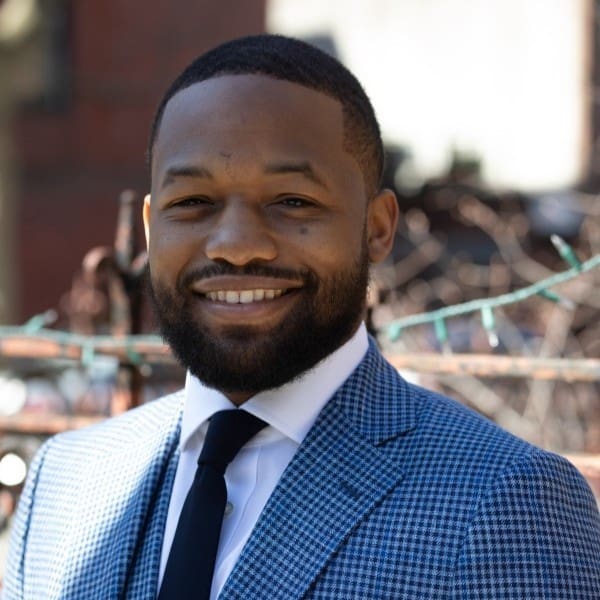
Munson Steed: Hey, everybody! This is Munson Steed. Welcome to Health IQ. Where we give you insight to all those individuals working hard every day, doctors, teachers, professors, and principals that are making a difference in our life, to increase the IQ of our community, to understand, that is, for us to actually advocate for ourselves in every single aspect, as it relates to health care delivery from the beginning, conception, to the end. We are here, and I am so proud to introduce you to my dear brother, Dr. Bility. How are you?
Rasheed Bility: I’m doing well, I’m doing well. How’s it going on you guys’ side?
MS: It’s excellent, when you think about it here at rolling out. Healthcare professionals like yourself are so dedicated in capacities that we only think. The pathway to a healthcare equity career, and I put them both together. Without individuals actually in there, the care cannot be the same; the care might not be as deep. The equity and equitable gap conversation, cultural insights, all those things missing at a moment in time where there is actually typically a crisis, or something that needs to be addressed immediately.
You are on the other side of helping solve and give vision to those individuals who may not have a pathway to being a part of this medical inequity. Addressing through being able to create those loving visual experiences where, whether it’s nursing, whether it’s in EMT. Our young black and brown youth will have an opportunity to collaborate with a major fortune, probably 100 corporations and a major university, and you a major high school to really come together.
Can you share the mission, how it started and really kind of the KPIs that you’re using to move this community forward and kind of use those key performance indicators to kind of say, this is the progress that our young people can and will and are making each and every day?
RB: …I’m the proud, proud principal of the Urban Assembly Early College High School for emergency medicine. My school is located in the Lower East Side of Manhattan, New York, and we are a community that is made up of predominantly Black and brown folks, students, and families. We’re a Title I school, and many of our students are coming from all across New York City and we’re a small healthcare school with a CTE focus nestled in LES.
The platform for my leadership here as a principal is to expand opportunities for black and brown students. And we do that specifically right by providing students with access not only robust work based learning experiences outside of the classroom and paid internships, but we also do that by providing students with an all expense paid opportunity to earn EMT certification, as well as an associates degree in Paramedicine free. And that is how we, as an organization at my school work together, and our partners, and really address and interrogate some of the racial ethnic gaps and disparities in education and also in health care, specifically.
So, that’s really what’s at the epicenter of the work that we’re engaged in. When we look at some of the data associated with representation, about roughly 8% of nurse practitioners and nurses were black, and about 7% were Hispanic. And so, really partnering with organizations that can help us to interrogate and rewrite the narrative around representation, around disparity, around health equity is really, really important.
MS: How do you expose these young people to these beautiful pathways to health care?
RB: It’s a life’s mission. It’s legacy work. Being able to sort of unearth opportunities to expand opportunities. We have students that go on EMS rotations their senior year, and they are riding around in the back of an ambulance with a paramedic, with a trained paramedic, and they’re responding to 911 calls. Folks in the Bronx, which is the poorest Congressional district in New York State, and they’re responding to. And many of our students come from these communities, so not only are they learning about it in their courses, at our industry partner, which is the borough of Manhattan Community College, where students get their degree from.
High school students get their degrees from their associates degree, but also tangible experiences, saying, we had students last year that responded to two gentlemen that had overdosed on opioids and they had to resuscitate them. They had to really just administer CPR. We have the only student-led CPR team in the entire country, something that we’re very, very proud of. We travel around New York City partnering with the American Heart Association, ‘cause partnerships are really, really important. And that’s why, we’re really happy that Johnson & Johnson was able to work with our School and the Black Nurses Association.
So that we can use their resources as a vehicle to address some of these inequities. But our students are hungry, our students, they want to do this work. They’re intrigued by this work. They want to hit the ground running. They respond in emergencies, even in the school building. We have a lot going on. These kids are passionate about this work and receiving some of this support from organizations and partnering with organizations, has really allowed us to push our mission forward. But our students, they, we have so many aspiring health care professionals at our school
We have aspiring doctors, nurses. We have so many students that want to be nurses. We’re just really engaging this work on a very high level and given them many pathways. So they can say, “Hey, I can do this. Not only can I do this but my friend on my block can do this too.” And so, that’s how you make it contagious, and that’s how you make community service infectious. And that’s how you essentially advocate, or to advance racial equity and health equity as it relates to partnerships with organizations. Yeah, absolutely.
MS: How important is it for a young person to know that they can don a uniform that will ultimately save lives and save family members a lot of pain, because they were there. What’s it like as you see them? If you would describe for the audience, participate in your program, earn their rights of passage, and get on the pathway to it, looking, feeling, and understanding the part that they play in the community.
RB: It is life-changing. When I see my students with their gear on, when I see them teaching adults, hence the heart CPR. When I see them studying, thoroughly immersed in the course that they’re taking is called Emergency Medical Care 100. These kids are in front of me. They are professionals. It sends chills down my spine to know that these children that I’ve known since they were 13 years old are equipped to save a life. It can save my life, if I go into a cardiac episode or cardiac arrest, or something. They can save my life.
I can’t even describe how much of an impact that it has on our community, especially with our theme. We’re the only school in New York State that is going to offer students an associate’s degree in paramedicine for free, and our kids are gonna take advantage of those opportunities. We spend a lot of time really developing some of the SEL skills for them to prioritize the patient experience. Part of their coursework is really responding and de-escalating.
So, they’re learning lifelong skills right in terms of interpersonal skills but they’re also learning lifelong, tangible skills that are going to allow them to enter the health care profession, to ultimately save lives and transform, and really reimagine what health care means in their community. So, when our kids have their gear on and that they earn when they’re going to go on their rotations. They walk around campus, and it’s like they’re celebrities.
They are celebrities. They are celebrated and it’s really like a huge homecoming when these kids come with their gear on and so…
MS: When you say gear, if you’ll just describe not long, but what we’re talking about when you say gear?
RB: So, they have on their utility jackets, their EMT utility jackets. They have on their cargo pants, they have on their boots, and they’re dressed like they’re gonna get right in the ambulance, as soon as they leave here, cause they’re dual-enrolled students. They’re fulfilling high school graduation requirements, while still earning credits towards an associate’s degree in paramedicine. So, we’re talking about high functioning students. We’re talking about students who are really thoroughly immersed. We’re talking about students that want to be change agents. And we’re talking about students that really just wanna address the disparities in health care, in their communities.
And really, our CPR team, we call it the Hands to Heart CPR team, which was founded by one of our founding teachers here. The CPR team really came out of a project in which students analyze the ambulance response times by zip code in New York City. And what they were able to assess was, the communities where Black and brown folks lived, and where poverty was highly concentrated, they had the longer ambulance response times. And so, as a community, we decided to create an organization within our school, where we can teach students how to respond until health care professionals could arrive, so that at least we can work as hard as we can to save a life.
And when you empower students to save lives, you empower a citizenry of students that are resilient, a citizenry of folks that are empathetic, that are achievement-oriented, that are deliberate. And then also, which our core values are, a citizenry of students, a community of students that can be their own ally. And that’s the power work that goes into into being a health care professional, and we are cultivating that at our school as early as 13 years old.
MS: When you think about the level of access that you’re creating right now, for them to have access to a field that clearly doesn’t have the equity that we would like, the empathy that we would like, the compassion that we would like. Just giving them access and training early on. What does that do for our community to have young soldiers who are now, early understanding that they are part of the legacy to solve a problem?
RB: And what that does for these students specifically, It also allows them to hold each other accountable. Sometimes I’m gonna, and one of my friends always said, sometimes you can’t be what you can’t see. And when it is visible that I can be a nurse, when it’s visible that I can get my doctorate, when it’s visible that I can be an MD, when I can see that in my community, that’s tangible. That’s a tangible experience. That’s someone I can talk to.
That’s someone that can show me the ropes and say, “Hey, don’t make these mistakes.” That’s someone that can tell me, “Hey, go to this specific school. I know folks at this school. I can connect you with these folks.” And it creates a pathway within our own communities that will actually inflate, sort of like defibrillate, I would say, if you will. The sort of the absence of folks that are Black and brown in some of these professions. So, I think that visibility, even when we have recruitment events, folks love coming to speak to our students about CPR.
We are expanding our work in terms of creating an emergency medicine team. That’s going to not only be a CPR and AED team, but we’re going to have a Narcan team to address some of the opioid epidemic around this country. A stop-the-bleed team. To your point, how can we have young soldiers that are grassroots, that are on the ground? That can respond to these sorts of emergencies as early as 13 years old? We are creating empathetic students.
I can’t explain just how powerful it is. When I see some of these students in front of me, and how dedicated they are to the field, they’re just entries. They just entered. So it’s a beautiful thing.
MS: You’re an anomaly in education as well. What’s it like as a Black man to be the principal, so that you’re father, coach, uncle — all in one — watching you touch one graduating class? You are touching a whole generation of that whole community. What’s it like for you to know that you are clearly able to be anywhere at this point? You do all the headaches that come with touching testosterone and young people filled with hormones. But you’re choosing, obviously at a wonderful time, but just dedicating your life. Why?
RB: I do this work. I engage in this work so deeply, because I believe that a mentor of mine always says that education saves lives. Education allowed me to really reimagine what education meant to my family. I was a first generation college student. First generation masters, first generation doctorate. And so, I wanna be that example for some of my students that you can be the first of many things. You won’t be the last once you’re the first, and you have to create that path for the folks that come after you.
And it’s my responsibility here to foster a safe and supportive and inclusive learning environment for my students, where they feel valued and respected regardless of their race and ethnicity. Being a black man in education is super important. Growing up, all of my principals were white males, and I learned from them, but ultimately the folks that I sort of gravitated to were some of the black males in the community, in my school community, but they weren’t necessarily in leadership positions. And so it was, my continent striving for an eternal goal to make sure that I was a principal, that was really important to me.
And really some of the work that my community will begin and continue to engage in, is really incorporating diverse perspectives and experiences into our curriculum, and not only sort of what we incorporate, but like what we teach? What lens? How do we teach it? How does it relate to and promote culturally responsive and sustainable teaching practices and education? And how do we challenge stereotypes and biases that have historically soiled folks that have been excluded? And so that’s part of my work and why engage in this work because it’s truly transformational, transformative work that I believe just sets the groundwork for folks to follow.
And there are many before me, that I learned from as well, when I was in kindergarten. Dr. Lester Young was my superintendent, and I was in kindergarten, and I couldn’t understand why in kindergarten they kept calling this guy a doctor, and he didn’t have on a white coat. I didn’t understand. And so I was like, “I’m gonna be a doctor with no white coat,” and that was in kindergarten. And so I kept in touch with Dr. Young.
And to this day, we have conversations. He visited my school when I became a principal, and these are full-circle moments. And so, I cherish the Black and brown leaders and education that are sort of putting in this work and making these sacrifices so they can really invest in our communities.
MS: Well, I want to say congratulations, much respect. Really appreciate your dedication. I’m Munson Steed, this has been a phenomenal conversation with my dear brother. … Thank you so much.
RB: Of course. Thank you.

